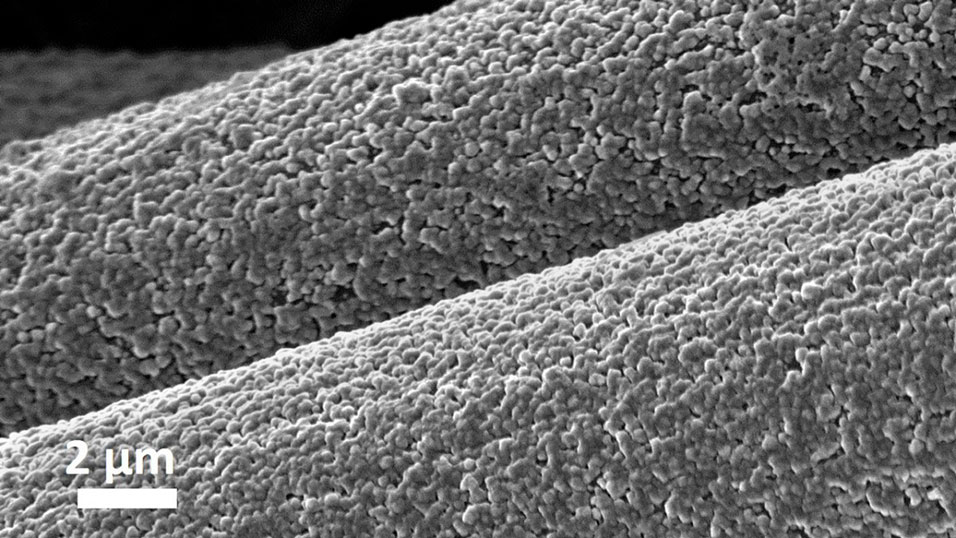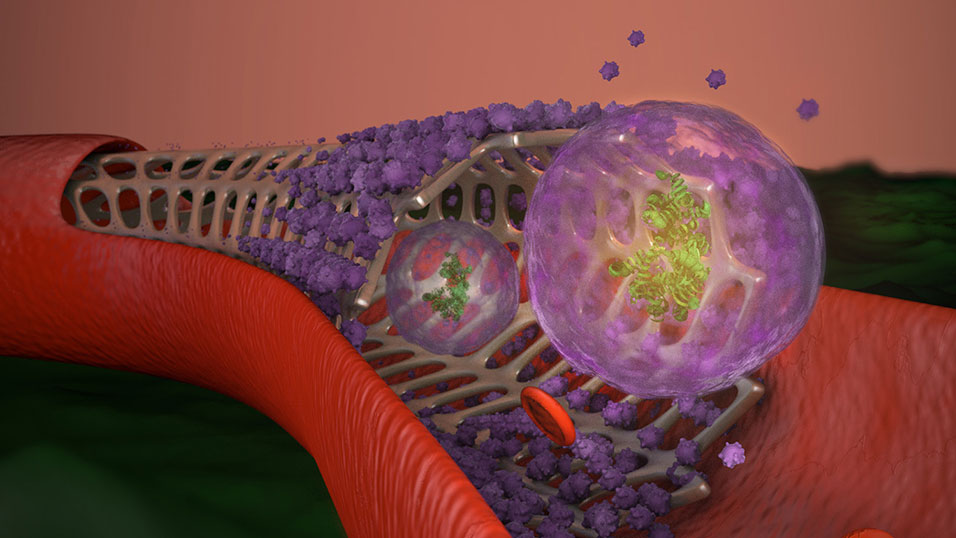ITHACA, NY.- The cost of harvesting solar energy has dropped so much in recent years that it’s giving traditional energy sources a run for their money. However, the challenges of energy storage – which require the capacity to bank an intermittent and seasonally variable supply of solar energy – have kept the technology from being economically competitive.
Cornell researchers led by Lynden Archer, the Joseph Silbert Dean of Engineering and the James A. Friend Family Distinguished Professor of Engineering, have been exploring the use of low-cost materials to create rechargeable batteries that will make energy storage more affordable. These materials could also provide a safer and more environmentally friendly alternative to lithium-ion batteries, which currently dominate the market but are slow to charge and have a knack for catching fire.
The group previously demonstrated the potential of zinc-anode batteries. Now, they have employed a different approach for incorporating aluminum, resulting in rechargeable batteries that offer up to 10,000 error-free cycles.
Their paper, “Regulating Electrodeposition Morphology in High-Capacity Aluminium and Zinc Battery Anodes Using Interfacial Metal–Substrate Bonding,” was published in Nature Energy.
The paper’s lead author is Jingxu (Kent) Zheng, Ph.D. ’20, currently a postdoctoral researcher at the Massachusetts Institute of Technology.
“A very interesting feature of this battery is that only two elements are used for the anode and the cathode – aluminum and carbon – both of which are inexpensive and environmentally friendly,” Zheng said. “They also have a very long cycle life. When we calculate the cost of energy storage, we need to amortize it over the overall energy throughput, meaning that the battery is rechargeable, so we can use it many, many times. So if we have a longer service life, then this cost will be further reduced.”
Among the advantages of aluminum is that it is abundant in the earth’s crust, it is trivalent and light, and it therefore has a high capacity to store more energy than many other metals. However, aluminum can be tricky to integrate into a battery’s electrodes. It reacts chemically with the glass fiber separator, which physically divides the anode and the cathode, causing the battery to short circuit and fail.
The researchers’ solution was to design a substrate of interwoven carbon fibers that forms an even stronger chemical bond with aluminum. When the battery is charged, the aluminum is deposited into the carbon structure via covalent bonding, i.e., the sharing of electron pairs between aluminum and carbon atoms.
While electrodes in conventional rechargeable batteries are only two dimensional, this technique uses a three-dimensional – or nonplanar – architecture and creates a deeper, more consistent layering of aluminum that can be finely controlled.
“Basically we use a chemical driving force to promote a uniform deposition of aluminum into the pores of the architecture,” Zheng said. “The electrode is much thicker and it has much faster kinetics.”
The aluminum-anode batteries can be reversibly charged and discharged one or more orders of magnitude more times than other aluminum rechargeable batteries under practical conditions.
“Although superficially different from our earlier innovations for stabilizing zinc and lithium metal electrodes in batteries, the principle is the same – design substrates that provide a large thermodynamic driving force that promotes nucleation; and runaway, unsafe growth of the metal electrode is prevented by forces such as surface tension that can be massive at small scales,” said Archer, the paper’s senior author.
Co-authors include doctoral students Tian Tang and Yue Deng; master’s student Shuo Jin; postdoctoral researcher Qing Zhao; laboratory manager Jiefu Yin; Xiaotun Liu, Ph.D. ’20; and researchers from Stony Brook University and Brookhaven National Laboratory.
The research was supported by the U.S. Department of Energy Basic Energy Sciences Program through the Center for Mesoscale Transport Properties, an Energy Frontiers Research Center, hosted at Stony Brook University. The researchers made use of the Cornell Center for Materials Research, which is supported by the National Science Foundation’s Materials Research Science and Engineering Center program.










